Pallet wood is a great option when you’re looking for inexpensive or free building materials for your DIY projects. Many pallets have already experienced some kind of weathering and exposure to the elements, giving them a rustic appearance. They can be used for projects such as tables, signs, chairs, flower boxes, garden boxes, fences, and more. Since they can be exposed to the elements, pallets can also get dirty.
How do you clean pallet wood so that it can be used in the home? In this article, we will discuss how to pick out pallets that are easier to clean and safer for projects. In addition, we will discuss some of the steps for cleaning a pallet. Finally, we will discuss safety considerations for indoor use.
To find out more, we need to start at the beginning:
What is pallet wood?
Pallets are the wooden platforms that goods are stacked on. They’re also used to store things in warehouses. You can find discarded pallets all over the place. They are made of solid wood and can be very beautiful, making them a popular choice for home DIY projects.
If you ask around, you can usually score a few pallets from stores or warehouses near your neighborhood. You can also sometimes find them posted on Craigslist under “free.”
Pallet wood is a great material that can be stained any color you want. It’s also incredibly durable, so when you turn it into something beautiful in your home—like a table or bookshelf—you’ll be sure to impress all of your friends when they come over and ask where you got it. Just say “Oh, I made it myself!”
Some pallets are easier to clean than others
Some pallets are much easier to clean than others. Pallets that have been exposed to the weather for a long time are more difficult to clean than pallets that have been stored inside. The same is true of pallets that have been exposed to chemicals or those with mold or stains on them.
So, pick a pallet that’s easy to clean. Here are some factors you should check on:
Make sure that the pallet does not have mold or stains on it
Pallet wood can be a goldmine for the DIYer or hobbyist looking to get creative on a budget. But before you can start, you’ve got to make sure that your pallet doesn’t have any mold or stains on it, both of which are difficult to remove.
First, inspect the pallet for mold. Pull up on one of the boards and check underneath it for any signs of black or green fuzz. If you see any, then don’t use that pallet! Mold can actually be hazardous to your health.
If your pallet is clear of mold, then check it for stains. Stains are usually left behind by spilled paint or oil from industrial equipment that was stored on the pallet. However, you don’t know what sort of chemical caused the stain. It might be a good idea to steer clear of that pallet!
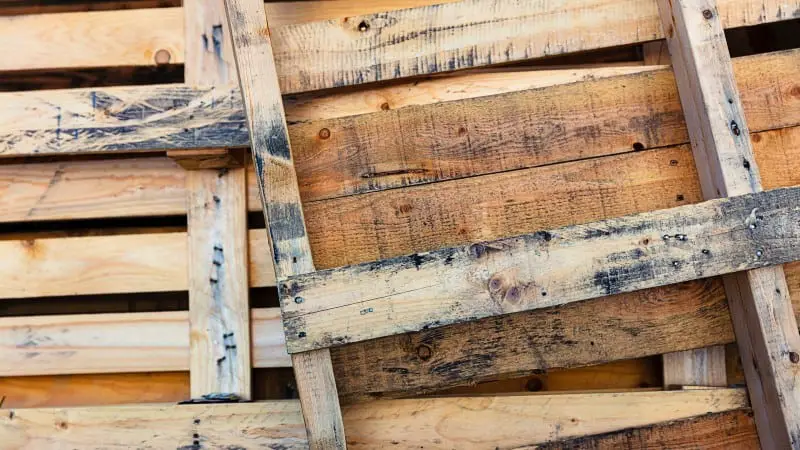
Inspect the pallet and make sure that the nails are not too hard to remove
The first step is to inspect the pallet and make sure the nails are not too hard to remove. This is important for a few reasons:
- You don’t want to spend forever removing the nails. Also, you don’t want to break off any of the wooden planks in the process of removing them. That would be a real waste of good wood!
- If you want to cut the planks out of the pallet to avoid pulling out nails, you will end up with shorter pieces. However, you can cut down on broken wood and actually save more usable pieces.
- Old, rusty nails can be a real health hazard. You could get tetanus by cutting your skin on one!
- You might think that the old nails contribute to a “rustic”, “weathered” appearance. However, the hard nails might interfere with further cleaning steps such as planing or sanding.
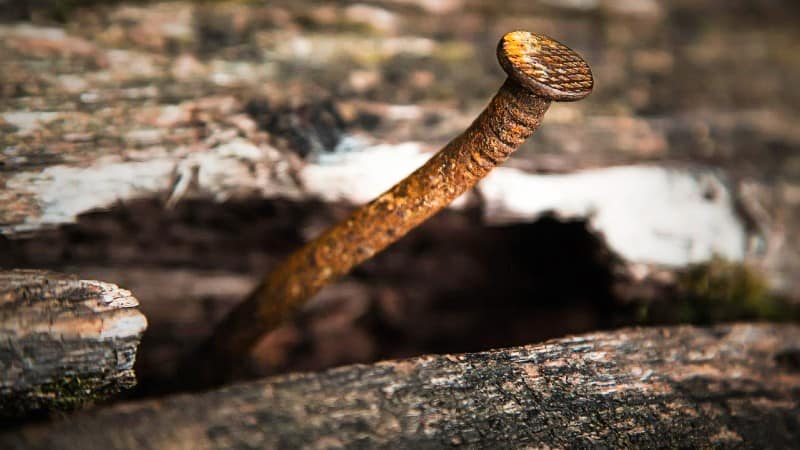
Make sure the pallet is free from chemical spills
Make sure the pallet is free from chemical spills. Many pallets are used for shipping or receiving toxic chemicals, so double-check that your pallet hasn’t been used for anything like that.
Try to find pallets that have been used only a small number of times
Sometimes, pallets are made to custom dimensions in order to ship specialized products. If these are “big ticket” items (such as medical equipment), it makes sense that shippers would not be transporting them with dirty, contaminated pallets. So, you could assume that the pallets were fairly new and clean.
In general, here are some fairly safe sources for pallets:
- Appliance Stores
- Furniture Stores
- Hardware Stores
- Local Businesses
Power washing of pallet
OK, now that you’ve picked the right pallet, how do you remove surface grime, dirt, and so on?
Luckily, you don’t have to live your life with grime-laden pallets! You can easily remove it with a power washer. This tool shoots a stream of pressurized water to clean objects. When using this tool, keep a few things in mind:
- Make sure you have enough hose length to reach the area you’re cleaning
- Wear appropriate clothing and eye protection
- Be careful not to spray items you don’t want wet
Power washers are great, but they can do some serious damage if you’re not careful. Test out your power washer on one piece of wood before blasting the whole pallet with it, just to make sure you don’t damage the wood itself or blast off any pieces you want to keep.
Another approach is to fill a pail with soapy water and rub off the stains by hand. Then you can wash off the soap with a power stream.
Many people use bleach to help with cleaning. Mixing bleach with other chemicals can be dangerous. For example, ammonia and bleach will produce a poisonous byproduct.
Wood surfacing and planing
Even after you clean the wood, it will still have a “rough” or “weathered” look. If that’s what you want, you might not need to go through this step. However, if you want your project to look like it came from the lumber yard, you might need to use a Wood Surfacer, Thickness Planer, or similar tool.
There are several considerations with respect to planing:
- You don’t want to plane off too much wood and make the piece “too thin”. This can be easy to do if you run the wood through the planer several times.
- Make sure that all nails and other rough objects have been removed from the wood. These objects can harm the cutter head planing knives of the wood surfacer!
- The wood surfacer can leave “milling marks” and other planing defects on the wood. If these are present, you can sand the wood to remove them.
- You might be able to use a hand plane and/or hand wood scraper rather than the power wood surfacer. However, make sure that you do not gouge out the wood with these tools!
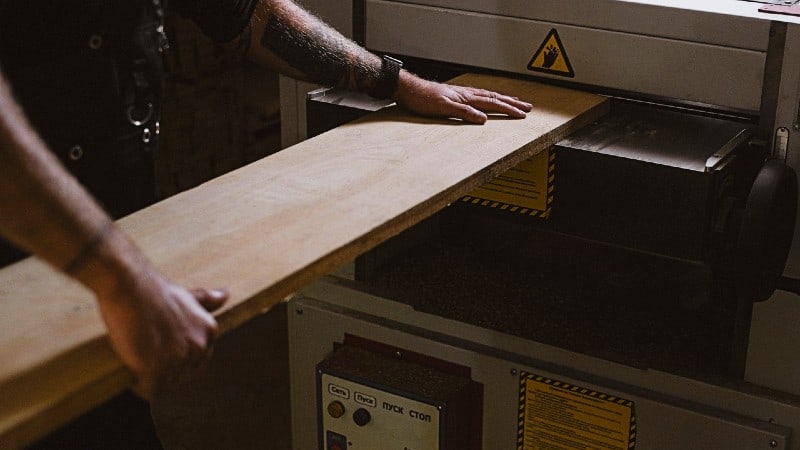
You might want to sand the wood
The wood might not be smooth enough for your project after you have planed the surface. In addition, there might be imperfections and marks you need to remove. Use sandpaper for this.
Hand sanding is fine. Start with rougher grits and then use progressively finer grits. It often helps to wrap the sandpaper around a block of wood or similar object. Make sure it can fit in between the pallet slats. Also, sand with the grain of the wood. Otherwise, you will leave marks on it. You may not see them at first; however, wood stain or other finishing material will bring them out and make the marks visible.
If you’d rather power sand, though, that’s okay too! A belt sander removes material from the surface quickly, but also requires a bit more finesse so that you don’t end up gouging the surface by pressing too hard or using coarse grit sandpaper.
You need to remove the sawdust after sanding. Use a damp cloth for this. Once again, you may need to dry off the wood. Alternatively, you can remove the sawdust with a tack cloth.
Is pallet wood safe for indoor use?
This article is about “how to clean pallet wood for indoor use” rather than pallet safety in general. So, I won’t cover that subject in too much detail here. However, you need to consider it if you plan to clean pallet wood so that you can bring it inside your home.
If you are going to use pallets for an indoor project, your first goal should be to find out what type of treatment has been used on the wood and whether or not it is safe for use in a home. So, how does the DIYer deal with this situation? When are the pallets safe to use?

To find out, we need to know about the IPPC. The IPPC is the International Plant Protection Convention, an international plant health agreement enacted to limit the spread of disease from one country to another.
Wood packaging material can contain parasites, larvae, etc. and the IPPC issued the IPSM 15 standard regarding the treatment of wood to prevent the transmission of parasites in wood packaging material (such as pallets, boxes, and crates) as they move from one area to another due to the shipment of goods.
The wood is given a mark or stamp to show how it was treated. Below are some of the treatment codes that pallets can have:
HT – Heat treated
The wood must be heated to a minimum of 56 degrees Centigrade throughout for at least 30 minutes.
This does kill most parasites; however, it does not kill them all.
Also, the IPSM 15 standard states that:
…The phytosanitary measures described in this standard are not intended to provide ongoing protection from contaminating pests or other organisms…
I would gather from this that it is good to know what has happened to the pallet during its lifetime. Has it been infected with pests? Has it been outdoors? Has it gotten wet or damp?
Another problem is mold contamination. Even if the pallet is initially dry and had no mold, it might get infected with mold at a later point:
…pallets can be rewetted when stored outdoors, allowing other mold fungi to colonize the wood…even kiln-dried wood can experience mold attack when it is rewetted…Many producers also have a misconception that heat treatment will provide protection against mold attack…
– From article by Jeff Morrell, PH.D., National Wooden Pallet & Container Association
So, you can see that contamination can be reduced with heat treatment. However, it looks like it does not eliminate it entirely.
DH – Dielectric heating
This is another form of heat treatment. In this case, Microwaves or Radio frequency electromagnetic waves are used to heat the wood.
With standard treatment such as wood in a kiln, heat is conducted from the surface of the wood to the inner core. So, the surface reaches a higher temperature sooner than the other parts of the wood. With dielectric heating, the inner part of the wood can reach a higher temperature sooner than the surface.
MB – Methyl Bromide
Methyl bromide treatment of wooden pallets uses fumigation with the pesticide to kill any pests in the wood. Wood packaging material thicker than 20 cm should not be treated with methyl bromide. The chemical also has been banned in the European Union in 2010 and can only be used under strict conditions. However, it is still possible that you might come across pallets treated with methyl bromide—so don’t use them!
Methyl Bromide damages the Ozone Layer and is termed an Ozone Depleting Substance (ODS). It can lead to an increase in the amount of ultraviolet light hitting the Earth’s surface. This can cause an increase in cancer and can have many other negative effects.
Methyl Bromide is a toxic substance and can be harmful to the:
- skin
- eyes
- lungs
- reproductive system
It’s a question that’s been on everyone’s mind: is pallet wood safe for indoor use?
If you’re a DIYer or pallet enthusiast, this is probably an important question to you. And the answer is… maybe! You see, it depends on a few different factors:
The pallet does not have a stamp marking, no evidence of chemical spill, no mold or mildew, from a safe source – If the pallet does not have a stamp marking, it is probably one that has been used exclusively within the United States (However, it would be good to be familiar with the History of the pallet so that you know how it was used). Since Methyl Bromide has been banned in the United States, it is reasonable to conclude that the pallet has not been exposed to that pesticide.
Pallets can be exposed to a lot of things during transport and storage—petroleum-based products, pesticides, herbicides, and other chemicals—so it’s important to know where your pallets are coming from. Pallets that have been exposed to these substances should not be used indoors
As described in the section above, pallets can be contaminated with mold or mildew. Even if a pallet has been heat-treated, it can still get contaminated at a later time after getting wet. So, pallets like this should not be used indoors.
Pallets should be from a safe source. As described above, these are sources like appliance stores, furniture stores, hardware stores, and local businesses.
The pallet has a stamp marking, the marking says MB – The IPPC requires that most packaging material (such as pallets) used for export or transfer of goods from one country to another have a stamp with data such as the country of origin and the treatment it has received. Pallets from the EU are unlikely to have an MB stamp because Methyl Bromide use was banned there. However, older ones made before the ban might have it. Pallets with the MB stamp SHOULD NOT BE USED.
Ones with treatment stamps such as HT and DH might be okay, since they were treated with heat. However, remember that you need to know if the pallet was exposed to water at some time in its life. Even short exposures can allow heat-treated wood to get contaminated, as described above.
Naturally, you should also look for pallets with no chemical spills that have been obtained from safe sources.
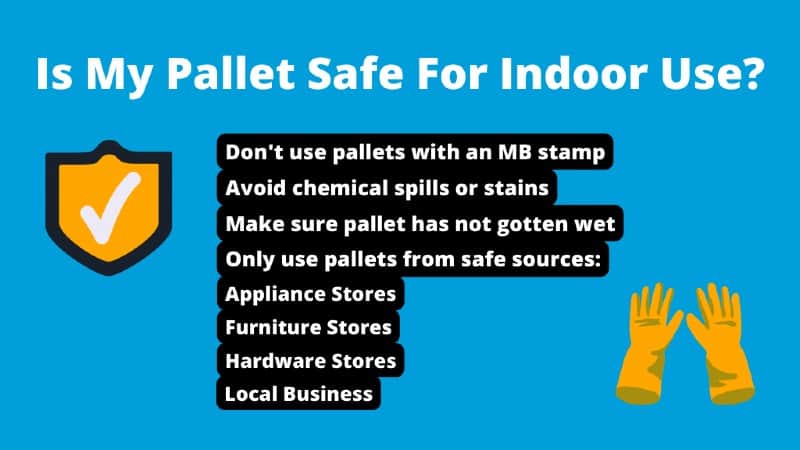
Conclusion
So, there you have it! You can use pallet wood for indoor furniture and decorations, but there are some things you should know about it.
First of all, don’t use pallets with MB marks on them because they could be contaminated with Methyl Bromide (a toxic and hazardous chemical).
Second, make sure that your pallets haven’t been exposed to water at any point during their lifetime. Even if they’ve been heat-treated (kiln dried), water can still cause contamination in otherwise safe pallets; so if there’s any chance at all that your pallets were exposed to moisture, don’t use them!
Thirdly and most importantly: only use pallets from safe sources! Pallets from unsafe sources could contain dangerous chemicals or other contaminants that may not be detectable by sight or smell alone. Some of the best sources for pallets are:
- Appliance Stores
- Furniture Stores
- Hardware Stores
- Local Businesses
Did you enjoy reading this article? If so, you might want to visit my Pinterest profile. It contains pins about Woodworking, Tools, Projects, Tips & Tricks, DIY & Crafts, Hardware, and much more!

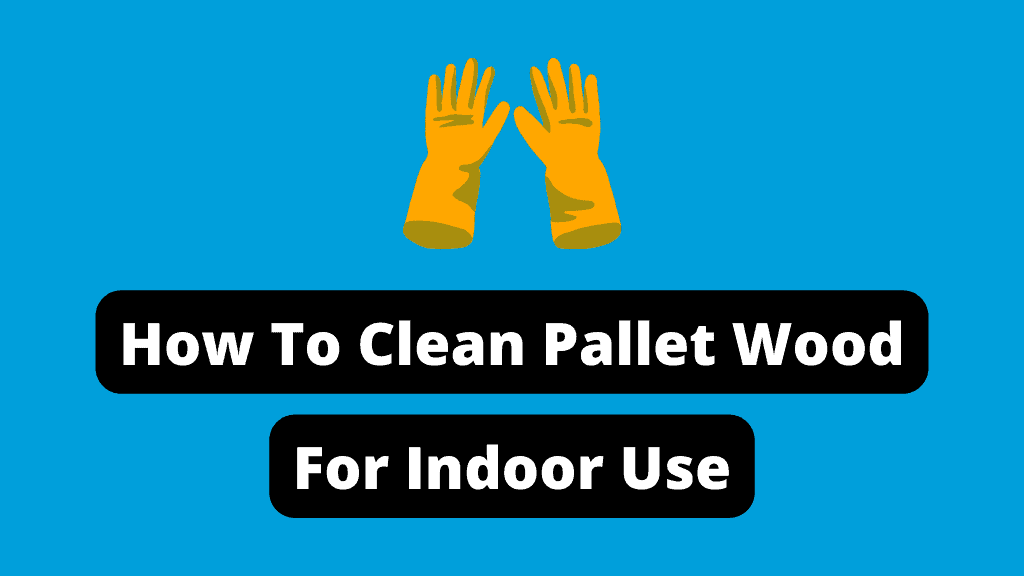

Great information, thanks.
GREAT information !! Thanks For Sharing!! I DIDNT realize that they Treated Wood With THAT Stuff??? G-d♥️Bless ?
I would like to use pallets for my existing wall in my dining room instead of painting it. Would that be safe? Would I have to treat them in any way since I plan to have them in my house?
Thank you for your help in this mattering
Thank you very very much great information that I was not aware of. Love it. Thank you again.
Good information! Thank you!
For many years I thought of using pallets for an outdoor furnishings. This of course will be under a protective shade. From the sun, rain and other matters that will ruin the invested hours of hard. Now those ideas are back after 33 years keeping it in my head. Thank for sharing your ideas with the public. I am forever greatful. You will always be talked about where the ideas came from. Stay safe and always be protective of your health and your families.
Merci beaucoup pour tous ces details. J’avais justement un projet pour l’interieur.